Description
Halal Frozen Chicken Wings Joint: A Complete Guide
Introduction
In recent years, consumers have become more discerning about what they eat—how it’s raised, processed, and prepared. Among these concerns, religious dietary restrictions (like halal), ethical treatment of animals, food safety, and convenience all play significant roles. One fast-growing niche is Halal Frozen Chicken Wings Joint, particularly joints or businesses dedicated to this product line.
This article explores what it takes to run a Halal Frozen Chicken Wings Joint: the significance of halal certification, sourcing quality wings, freezing and processing methods, food safety, marketing, consumer trends, competitive landscape, pricing, logistics, and growth opportunities.
What Does “Halal Frozen Chicken Wings Joint” Mean?
Halal refers to what is permissible under Islamic law. When it comes to poultry, this concerns how the bird is raised, slaughtered, processed, and handled.
A Frozen Chicken Wings Joint is a business (could be a manufacturer, retailer, or distributor) whose main product is frozen chicken wings, prepared in specific cuts (“joints”) and sold frozen—ready for cooking.
Putting them together: a Halal Frozen Chicken Wings Joint is a business that sources, processes, freezes, and sells chicken wings that are halal, with proper certification, handled under strict food safety and quality standards, often in various joint cuts, seasoning styles, etc.
Why Halal Matters: The Religious & Ethical Imperative
Religious Compliance
-
For many Muslim consumers, halal certification is not optional but essential. It ensures that the animal was slaughtered in a specific way: by a sane adult Muslim (or in some interpretations, “People of the Book” under certain conditions), the name of God (Allah) is invoked at the time of slaughter, blood is properly drained, etc.
-
Halal also often implies the absence of haram (forbidden) additives: no pork, no alcohol or alcohol‐derived ingredients, no improper cross-contamination.
Ethical and Quality Considerations
-
Many halal certifications demand humane treatment of animals.
-
The “tayyib” principle (in Islamic jurisprudence) calls for wholesomeness, cleanliness, purity. So consumers often associate halal with higher food safety and ethical farming.
The Market for Halal Frozen Chicken Wings
Global Demand & Growth
-
The global halal food market is growing rapidly. As of recent years, it is expected to continue increasing, driven by population growth, increasing awareness, rising incomes, and more stringent purchasing power among Muslim consumers.
-
Chicken, being generally more affordable than beef or lamb, and more versatile, is often a mainstay of halal meat demand.
Consumer Segments
-
Muslim households seeking convenience and halal assurance.
-
Restaurants / food services wanting halal options for their menus.
-
Non-Muslim consumers who choose halal products for perceived quality, hygiene, animal welfare, or simply flavor.
-
Export markets especially where there are large Muslim populations or regulatory requirements for halal.
Sourcing & Production
To build a successful halal frozen chicken wings joint, sourcing and production must be airtight.
Sourcing
-
Farms that follow halal raising practices: feed, housing, no hormones or prohibited substances.
-
Slaughterhouses that are halal certified. They must follow local/regional halal standards (there are many certifying bodies globally) and handle all parts of slaughter and processing under those rules.
-
Supplier transparency: chain of custody, traceability, documentation.
Processing & Freezing
-
Cut & Joint Types: Whole wings, drumettes, flats, wing tips; sometimes individual joints are separated (e.g. “three joint wing” vs “two-joint wing”).
-
Cleaning, trimming, defeathering, de-blooding following halal standards.
-
Freezing method: Typically blast freezing to rapidly lock in freshness, minimize bacterial growth, maintain texture. For example, some companies freeze at -40°C then store at -18°C.
-
Packaging: Vacuum or sealed in moisture-barrier materials; keeping cross-contamination away from non-halal, allergenic, or non-safe products; clear labeling.
Certification
-
Halal certification bodies vary; certifiers like HFSAA (Halal Food Standards Alliance of America), IFANCA (U.S.), various local bodies in Asia, Africa, Middle East, etc.
-
Certification should cover slaughter, handling, processing, packing, storage, transport.
-
Regular audits, hygiene inspections, possibly microbiological testing.
Food Safety and Quality Control
Running a frozen chicken wings joint involves managing many risks:
-
Microbial control: Salmonella, Campylobacter, Listeria, etc. Proper freezing, hygiene, temperature control.
-
Temperature management: From slaughter to freezing to transport to retail; frozen chain must be maintained (cold chain).
-
Cross-contamination prevention: Separate halal from non-halal lines; avoid mixing with non-certified products; manage allergens if present.
-
Regulatory compliance: Local food safety laws, export/import health requirements.
Product Varieties and Innovation
To stand out, a halal frozen chicken wings joint can offer variety and also innovations.
Cuts & Styles
-
Drumettes vs flats vs whole wings vs wing tips.
-
Seasoned wings: pre-marinated in sauces (buffalo, barbecue, spicy, teriyaki, etc).
-
Breaded or battered vs naked (uncoated).
-
Ready-to-cook vs precooked (frozen cooked wings that just need reheating).
Flavor & Recipe Innovation
-
Use of halal spices and spice blends from different cuisines: Middle Eastern, South Asian, Southeast Asian, Mediterranean, etc.
-
Health conscious versions: lower sodium, organic, free from certain additives.
-
“Clean label” offerings: minimal ingredients.
Packaging & Portions
-
Portion sizes (single serve, family packs).
-
Packaging formats that maintain quality but reduce waste.
Pricing & Cost Structure
Key elements that determine price and margins:
-
Raw input cost: cost of chicken wings, feed, slaughter, certification, etc.
-
Processing cost: labour, energy (freezing, storage), seasoning/marinade, packaging.
-
Certification & compliance cost: getting & maintaining halal certification, food safety inspections.
-
Transportation & cold chain: frozen transport is more expensive. Packaging and logistics must support it.
-
Overheads: facilities, staff, utilities, marketing.
Pricing also reflects value: halal certification, convenience, flavor, quality. Many consumers will pay a premium for trust and assurance.
Competitive Landscape
Direct Competitors
-
Other halal frozen poultry suppliers.
-
Non-halal frozen chicken wing suppliers (for non-Muslim market or cross-over).
-
Restaurants / fast food places offering wings (though these are prepared, not frozen product supply).
Indirect Competition
-
Chicken nugget and other snack food providers.
-
Plant-based alternatives (though wing texture/flavor is tough to mimic).
-
Local fresh halal butchers or markets.
Marketing & Branding
Building trust and awareness is crucial.
Brand Messaging
-
Emphasize halal certification (which certifier, how rigorous).
-
Highlight quality: freshness, freezing methods, no hormones, ethical rearing.
-
Flavor/desirability: taste, convenience (“ready in minutes / oven / air fryer / fryer‐friendly”).
Digital Presence
-
SEO focus: keywords like halal frozen chicken wings, halal wings supplier, halal chicken joint, halal frozen wings near me, etc.
-
Website with detailed product pages, photos, certificate scans, cooking instructions.
-
Social media showing product shots, cooking videos, recipe ideas.
Distribution Channels
-
Supermarkets, specialty halal groceries.
-
Online direct-to-consumer.
-
Food service / hotels / restaurants.
Promotions
-
Sampling, promotions in stores.
-
Recipe sharing.
-
Partnering with food bloggers / influencers in the halal / cooking space.
Logistics & Supply Chain
Ensuring the product gets from farm to freezer to the consumer safely and efficiently.
-
Cold chain management (slaughterhouse → processing → freezing → storage → transport → retail/consumer).
-
Warehousing: frozen storage facilities with backup power, temperature control.
-
Packaging for shipping & retail: ability to ship frozen products regionally / nationally / internationally.
-
Regulatory paperwork for export/import: customs, health certificates, halal certification recognition.
Challenges & Risks
No business is without risks; here are some specific to a Halal Frozen Chicken Wings Joint:
-
Maintaining halal purity: any lapses (cross-contamination, mixing with non-halal ingredients) can damage credibility.
-
Fluctuations in chicken supply or feed costs.
-
Energy costs for freezing and cold storage.
-
Regulatory changes, or differences in halal certification requirements in different countries.
-
Spoilage risks if freezing or transport fails.
-
Competition, especially as more suppliers enter the space.
Case Examples & Best Practices
While the article is not about a specific business, these are general best practices drawn from leaders in halal meat / poultry markets:
-
Use of individually quick frozen (IQF) technology so portions can be separated rather than block frozen.
-
Clear labeling of halal certificate, slaughter method, date of freezing, batch number.
-
Regular third-party audits and transparency.
-
Maintaining high standards of employee hygiene, facility cleaning.
-
Investing in good packaging to prevent freezer burn and moisture loss.
Regulatory and Certification Overview
Common Certification Bodies
-
IFANCA (U.S.)
-
HFSAA (USA)
-
Bodies in other regions (Malaysia, Indonesia, Middle East, Africa etc.)
Key Requirements
-
Slaughter according to halal rules.
-
Ingredients (marinades, spices, additives) must be halal.
-
No cross contamination with haram substances.
-
Clean and sanitary processing facilities.
-
Traceability & audit ability.
Labelling Requirements
-
Weight, net content.
-
Frozen / storage instructions.
-
Certificate provider and identifier.
-
Nutrition facts.
Environmental & Sustainability Considerations
-
Sourcing poultry from farms with sustainable practices.
-
Reducing energy use in freezing and storage.
-
Eco-friendly packaging.
-
Waste management in processing.
These practices can appeal to consumers who care not only about halal but about ethical and environmental impact.
Financial Projections & Business Plan Components
To launch a Halal Frozen Chicken Wings Joint, here are the key financial/business plan components:
-
Startup costs: land / facility, equipment (freezer, packaging, processing), certification, initial supply contracts.
-
Operating costs: raw materials, labor, packaging, utilities (very significant for freezing), maintenance.
-
Revenue streams: wholesale to retailers, direct online sales, B2B food service, possibly a retail storefront.
-
Break-even analysis: how many kilograms (or packs) of wings need to sell at what margin to cover fixed and variable costs.
-
Pricing strategy: cost-plus vs value-based pricing; premium vs competitive.
-
Risk mitigation: backup power, insurance, multiple suppliers.
Hypothetical Profile: Halal Frozen Chicken Wings Joint in São Paulo, Brazil
To make it more concrete, let’s imagine a version of this business in São Paulo:
-
Brazil has a significant Muslim minority; also, consumers concerned with quality, food safety.
-
Regulatory bodies would include Brazilian authorities for food safety (e.g. Ministério da Agricultura, Pecuária e Abastecimento — MAPA), as well as halal certification bodies recognized in Brazil (or international ones).
-
Sources: Brazilian poultry industry is large; finding local halal-certified slaughterhouses could reduce import costs.
-
Distribution: supermarkets (e.g. Pão de Açúcar, Carrefour), halal specialty shops, online marketplaces, food service providers.
-
Potential challenges: high electricity costs, ensuring cold chain in hot climate, competition with non-halal but cheaper wings, customs/duties if importing ingredients or advanced machinery.
Opportunities & Future Trends
-
Convenience food growth: more households wanting easy, ready-to-cook halal meals.
-
Health & wellness: wings prepared in healthier ways (air fry, baked, less oil), leaner birds, organic, antibiotic-free.
-
Global export: if certified properly, there’s demand in Middle East, Southeast Asia, etc.
-
Traceability technology: blockchain, QR codes showing origin, halal status, etc., to increase trust.
-
Value-added products: sauces, dipping kits, ready cooked + frozen wings.
-
Sustainability features: eco packaging, green energy, reduced waste.
Conclusion
A Halal Frozen Chicken Wings Joint can be a very viable business in today’s market, combining religious compliance, food safety, convenience, and flavor. To succeed, the business must ensure rigorous halal certification, high standards in production and freezing, strong branding and marketing, efficient cold-chain logistics, and good understanding of the target market.

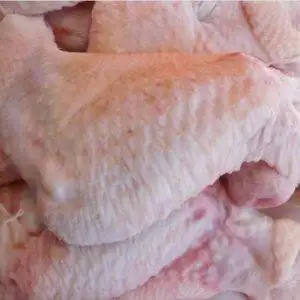
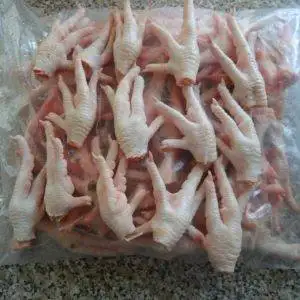
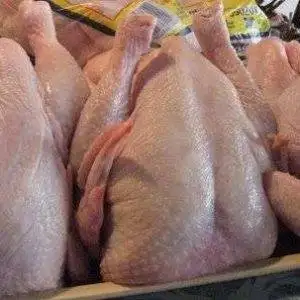
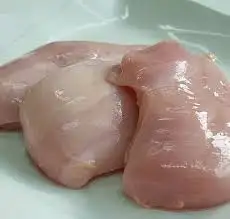
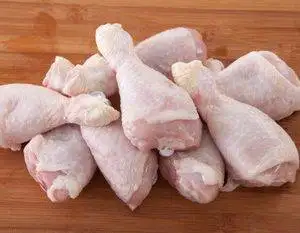
Reviews
There are no reviews yet.